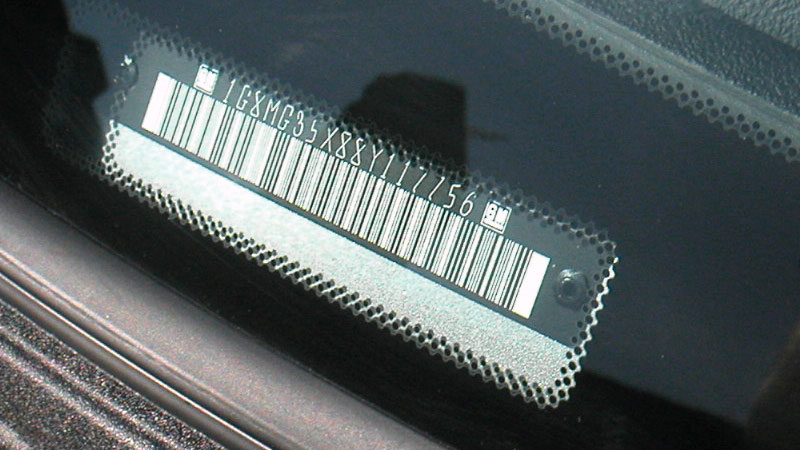
Where Can I Find The VIN?
Every vehicle must have a unique name. A typical name consist of 17 characters, namely, numbers and letters. This string of data is called a Vehicle Identification Number (abbreviated as VIN).
Where to find your VIN Number
Identifier can be found both in the documents and on the vehicle itself. If you are about to buy a used vehicle, look for it whenever you can. The code should be same in all the locations. Unfortunately, sometimes auto dealers provide false documents or reuse details of salvaged vehicles. Matching a vehicles VIN number in the documents with that on the vehicle will make any fraud apparent.
On your Vehicle
VIN is typically assigned to a vehicle by the firm that produced it. Every brand has its own guidelines regarding the location of the identifier. The surest way to learn about VIN number location on your specific vehicle is entering the request like "Where is VIN manufacturer model" in Google or looking for the corresponding article on the website of the manufacturer. Vehicles manual can also tell you where is the VIN number.
Physically, VIN is typically placed in the following areas:
- The lower corner of the windshield close to the driver side (and visible from outside) on the dashboard.
- Driver's door jamb. It is visible on the door frame when you open the door.
- The front part of the engine block, right under the hood of your vehicle.
Some manufacturers also stamp a VIN code into the floor, put it on chassis (hence another name, "chassis number"), and locate it under the spare tire or in the well for one of the wheels. The models that have touch screens or come with dedicated apps that give you instant digital access to the identifier upon request (find out more in your vehicles manual).
Motorcycles, mopeds, and scooters usually have the identification number etched as a vertical line on their steering neck or near the lower part of the motor cylinders. In the case of all-terrain vehicles, try looking at the frame near the shifter or find the cross beam under the hood.
Trailers have VIN on the stickers or plates on their tongue. Some manufacturers also put it on the frame or in other locations.
In the documents
According to the US DMV and some of the manufacturers, VIN is indicated in such documents:
- insurance card;
- vehicle registration card;
- vehicle title;
- records about body repair;
- instructions and manuals;
- reported by the police.
What does a VIN look like?
Before looking for the VIN on vehicle's details, it is good to know how they look like.
First of all, it consist of a string of 17 characters and a barcode, though the latter is no compulsory.
Second, VINS are tiny, sometimes even smaller than a barcode on the products from supermarkets.

VIN Number for a 2012 Infiniti G37
Last but not least, a VIN on a vehicle comes in several forms:
- a sticker, usually somewhere are the driver side door;
- an etching on the floor and metal parts;
- an engraving on the front window.
Trailers usually have a plaque with their brand name and model number. The model number is not the same as the one you need.
As for bikes, 17 characters are etched onto metallic parts during the manufacture process.
Now that you know how to locate your VIN, what's next?
The first thing to do with the number is save it somewhere for the future. The identification number is essential for dealing with the police, insurance companies, and the local DMV or tax administration on various vehicle-related matters.
An identifier of a used vehicle will help you get more facts about it with a special online search engine
How to decode a VIN online
Every 17 characters of a identification number means something: the model, the country and year of manufacture, and son on. You can decode a VIN number character by character, getting all the model and engine specs. However, this will not give you the full story of a vehicle in question.
Our online VIN decoder will go far beyond deciphering the code. It will also retrieve the history of a vehicle from numerous databases that are associated with it. You will get to know whether the vehicle was ever stolen, involved in an accident or if the vehicle was deemed salvaged by the insurance company. Try it now for free!
